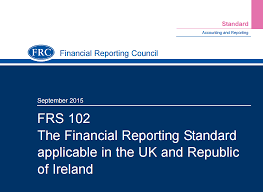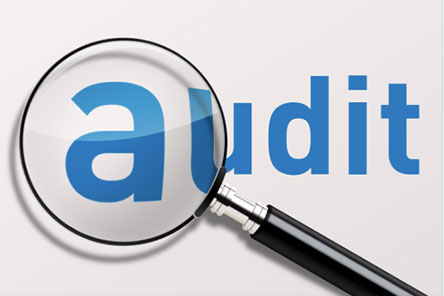
by John McCarthy Consulting Ltd. | Nov 10, 2016 | News
The audit of the first financial statements prepared under FRS 102 is already complete, in some cases, and for the remainder, will be well under way in the near future. The standard was first published in March 2013, over 42 months ago, but took some time to bed down. It would be easy for complacency to set in, as it seems it has been around for a while. However, auditors cannot afford to be complacent on this topic.
One of the single most important requirements from the audit perspective is that the audit team will need to have a good understanding of the new FRS 102 rules under which the financial information is prepared and the requirements for that information to be audited.
In the last ten years, many of the recently qualified auditors and accounting graduates have only trained under the International FRS framework.
It may sound silly, but FRS 102 is not the same as IFRS! It is a hybrid of old Irish GAAP and IFRS and a dangerous hybrid at that.
Good audit planning and preparation for FRS 102 is central to both achieving a good technical and efficient audit file.
The main audit issues that may arise on carrying out an audit under FRS 102 could include:
Provision of Non-audit services
Some entities will require a lot of hand-holding with the process of transition including the provision of accountancy, tax and valuation services. Tax and valuation services are often ‘farmed’ out elsewhere, so are probably less of an independence threat.
The provision of accountancy services, especially, presents both self-review and management threats. There is a significant risk that FRS 102 will increase both of these threats. Safeguards will need to be implemented and well documented by the audit team.
Taxation services
FRS 102 requires fair value re-measurement differences to pass through profit and loss. Tax issues can often be more complex under the new Irish GAAP and audit personnel will need a good understanding of the taxation rules.
Valuation of fixed assets
This is potentially the most troubling area for auditors. Old Irish GAAP is largely based on historical cost accounting, with many assets measured at cost less impairment. FRS 102 demands much greater use of fair values and now makes the use of fair value mandatory in some areas.
The learning curve for the audit team
It may take a considerable amount of time for financial statement preparers to fully understand the requirements of the new standard and the relevant implications.
Some of the implications are only becoming apparent now, over three and a half years since FRS 102 was first published!
The audit plan should assess the risk that those who prepared the accounts may not have a complete understanding of the new accounting and disclosure rules.

by John McCarthy Consulting Ltd. | Nov 1, 2016 | News
‘The specialist nature of the knowledge and services provided by the accountancy service providers makes them vulnerable to being sought out and exploited by those who seek to launder the proceeds of crime or evade tax. It is recognised in international risk-based guidance that accountancy service providers may be sought to assist in the structure and design of transactions intended to conceal the nature and origin of funds.’
So says the first ever National Risk Assessment published jointly in October 2016 by the Department of Justice and Equality (DoJE) and the Department of Finance. The assessment covers the main risk areas of the many sectors in Ireland that are subject to the provisions of the Criminal Justice (Money Laundering and Terrorist Financing) Act, 2010.
The report identifies the fact that very few (80 out of a total of 21,682 AML reports) suspicious transaction reports (known as STRs) were made by the accountancy profession, according to a separate report called the 2015 Annual Report on Money Laundering and Terrorist Financing from the DoJE, given the size of the sector. As a result, (among other risk factors) the sector is assessed as Medium-High risk.
Among the accountancy services identified, by the National Risk Assessment report as vulnerable to the risk of money laundering and terrorist financing are:
- Company and trust formations;
- Insolvency services;
- Providing financial advice;
- Providing tax advice;
- Handling client money;
- Managing client assets and financial accounts;
- Investment business services;
- Auditing financial statements; and
- Company secretarial services.
This first ever National Risk Assessment has been produced ahead of the international inspection of Ireland being carried out by the FATF in December 2016 called the Mutual Evaluation Review. This review can have significant international positive or negative reputational impact potential for Ireland as a financial centre, in a post-Brexit world.
To hear more about how to be on the alert for suspicions of money laundering and terrorist financing under the Criminal Justice (Money Laundering and Terrorist Financing) Act, 2010, come to our next AML course on Monday 28 November 2016.

by John McCarthy Consulting Ltd. | Nov 1, 2016 | News
In this second article on transition, we consider some practical tips for applying the requirements of Section 35 (the transition section) of FRS 102.
The Financial Reporting Council issued a report called the Annual Review of Corporate Reporting 2015/2016 on 21 October 2016 encouraging smaller entities to ‘start their planning as soon as possible in order to ensure they are prepared for a smooth transition’.
The FRC stated that ‘small entities will also be applying FRS102 for the first time from 1 January 2016, which may pose some challenges for preparers, but should improve reporting in certain areas, as well as offering opportunities to reconsider the necessary disclosures. Anecdotal evidence suggests that some of the larger private companies applying FRS 102 from 1 January 2015 could have started their planning for transition earlier; any entities yet to transition to new standards should start their planning as soon as possible to ensure they are prepared for a smooth transition.’
Here are some of the issues that may need close attention during the transition phase:
Dormant companies – make any changes before transition date
If any changes are planned that will affect the balances in dormant companies’ financial statements, it may be beneficial to make the changes before the date of transition. This should ensure that the company can take advantage of the exemption from restating its accounting policies.
Establish fair values at the appropriate time
Although it will often be possible to obtain fair values later, it will involve more effort and research than if the valuations are done as close as possible to the date to be reflected in the valuation.
Early identification of financial instruments
Make sure that contracts and agreements are reviewed to identify all financial instruments within your business at the earliest possible stage, including contracts such as derivatives that may not have previously been recognised on the balance sheet.
Some accounting options will be available only when the necessary steps have been taken by the transition date. Fair values are used extensively in the measurement of certain financial instruments (e.g. investment properties) and this information is gathered more easily at the time of transition than afterwards.
Keep contract terms basic wherever possible
Make sure all staff with responsibilities for negotiating contracts on behalf of the organisation, from sales and trade purchases to financing arrangements, are aware of the potential pitfalls associated with any unusual contract terms. It may be helpful to draw up a list of issues that need consideration or ensure prior approval before contracts are completed.
Modification of loan arrangements
When bank loans have been renegotiated under substantially different terms prior to the transition date, but there has not been a process of derecognizing the old liability and recognising a new one, the entity may apply the exemption in Section 35 to retain this treatment on transition.
However, this exemption does not apply if these renegotiations take place after the transition date, that is after 1 January 2015 for a calendar-year company. In such instances the comparative balance sheet will need restated.
Amortisation of intangible assets
When intangibles have previously been tested for impairment and not amortised, a remaining useful life will need to be established at the transition date. When the total estimated useful life of the intangible is estimated to be more than five years, reliable back-up evidence will be required to support the estimated total useful life and the remaining useful life at transition. This would often be available in the form of cash flow projections.
Translation of goodwill and fair value adjustments at closing rate
FRS 102 requires goodwill and fair value adjustments to be translated at the closing rate. This may differ from the current treatment as current Irish GAAP does not specify the rate to be used and therefore many entities have translated goodwill and fair value adjustments at the rate ruling at acquisition.

by John McCarthy Consulting Ltd. | Oct 21, 2016 | News
In this article, we consider practical tips for applying the requirements of Section 35 of FRS 102.
The Financial Reporting Council issued a report called the Annual Review of Corporate Reporting 2015/2016 on 21 October 2016 encouraging smaller entities to ‘start their planning as soon as possible in order to ensure they are prepared for a smooth transition’.
In this report, the FRC stated that ‘small entities will also be applying FRS102 for the first time from 1 January 2016, which may pose some challenges for preparers, but should improve reporting in certain areas, as well as offering opportunities to reconsider the necessary disclosures. Anecdotal evidence suggests that some of the larger private companies applying FRS 102 from 1 January 2015 could have started their planning for transition earlier; any entities yet to transition to new standards should start their planning as soon as possible to ensure they are prepared for a smooth transition.’
This article assumes that readers have used the FRSSE (2015) for the year ended 31 December 2015 and will now be adopting FRS 102 for the first time for year ended 31 December 2016.
Review of existing accounting policies
Companies will need to perform a detailed review of whether their current accounting policies meet the requirements of FRS 102 Financial Reporting Standard applicable in the Irish and Ireland, and whether change is necessary or desirable. and changes in accounting policy will be inevitable.
In some cases, the requirements under FRS 102 will be different from previous Irish GAAP However, transition to FRS 102 can also provide an opportunity to look again at current accounting policies and reconsider their appropriateness to the business. In some cases, there will also be accounting rules that were not previously in place e.g. the rule about recording transactions in the functional currency which can be in a currency other than the Euro, if the company’s sales are denominated mostly in sterling or dollars.
Time is of the essence
FRS 102 generally requires retrospective application (in our example the transition date will be 1 January 2015 and therefore the comparatives for the year ended 31 December 2015 will need revised under the new rules). It is very important to identify those areas most likely to have a significant impact on the financial statements and actions which might be taken to ease the burden, for example deciding which of the eighteen exemptions (currently available) to take.
You need to identify those actions which are time-critical, that is areas where action (or inaction) at transition will have a direct impact on the accounting treatment and the options available. Special care will need to be taken by entities that have hedging arrangements or defined benefit pension schemes.
Gathering information for restatement of comparatives
Don’t underestimate the challenge of restating comparative information, including numerical and narrative disclosures, on first-time adoption of FRS 102. There may be disclosures which were not required previously (e.g. the statement of cash flows) or which are now required in greater depth e.g. changes to the accounting policies on turnover and stock. It is hoped that the new companies Act (when enacted) will update the Companies Ct, 2014 and will allow smaller companies avail of the exemption form the statement of cash flows.
This information will generally be easier to gather at the time a transaction takes place or close the date a balance arises, rather than when the first FRS 102 financial statements are being prepared.

by John McCarthy Consulting Ltd. | Oct 14, 2016 | News
There are a number of key differences between previous Irish Generally Accepted Accounting Practice (GAAP) and FRS 102. Areas where the accounting treatment is substantially different from previous GAAP include, but are not limited to:
- financial instruments, especially long terms loans;
- investment properties;
- business combinations;
- deferred tax and
- defined benefit pension schemes.
Which differences will have the biggest impact will depend entirely on the individual circumstances of each entity.
Auditors should consider at an early stage both what they should expect the entities they are auditing to be doing and also what they should be doing themselves. Auditors should take early action and examine what preparations the entities they are auditing have made for transition, if they have not done so already.
Some of the key aspects that auditors will need will do to gain an appropriate level of understanding will include the following elements of management’s implementation:
- Clarify the responsibilities of management including carrying out an analysis of the impact on the business and ensuring appropriate plans are in place;
- Establish how the transition has been handled (e.g. is the functional currency correctly identified?);
- Communicate the changes with shareholders, other stakeholders including suppliers, employees, the Revenue Commissioners and banks (e.g. how have banks established the fair values of financial instruments supplied by the bank to the company?);
- Assess the need for staff training and up to date audit work programmes and software at an early date;
- Identify differences between current accounting policies and FRS 102 and
- Identify changes in financial data and additional information (e.g. client holiday pay data) to meet the revised requirements.









